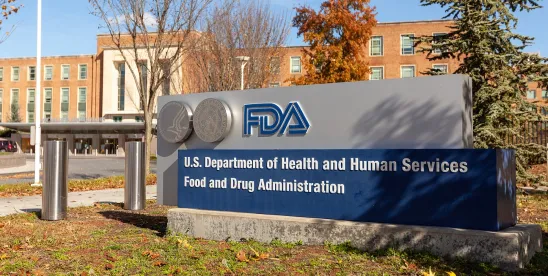FDA’s Final Rule regulating Laboratory-Developed Tests (LDTs) has been published in the Federal Register today, May 6, 2024. This follows a decades-long effort by some stakeholders to clarify the regulatory status of these tests. This landmark rule was finalized with lightning speed, with the Proposed Rule published in the Federal Register on October 2, 2023. The Final Rule is expected to go into effect in 60 days but includes a staged phaseout period of enforcement discretion to give stakeholders time to comply. If the rule goes into effect, it will dramatically alter the regulatory landscape for LDTs, affecting manufacturers, patients and healthcare providers. We expect stakeholders to challenge the rule in court as exceeding FDA's statutory authority and Congress to renew its efforts to establish a legislative framework for LDTs.
FDA received over 6,500 comments on the Proposed Rule from multiple stakeholders, including hospitals and academic medical centers, commercial laboratories, medical device and pharmaceutical industry members, and medical and healthcare professional associations. FDA made no material changes to the regulation itself from the Proposed Rule to the Final Rule. However, FDA made significant changes to its announced enforcement discretion policies by extending that discretion to multiple categories of LDTs, including allowing “grandfathered” LDTs to remain on the market without premarket review. FDA also made minor changes from the Proposed Rule regarding the phaseout policy.
The Final Rule, which is a hefty 160-page document, makes a relatively small change with major implications to 21 C.F.R. 809.3(a) by amending the definition of in vitro diagnostics (IVDs) to include IVDs “when the manufacturer of these products is a laboratory.”
As with the Proposed Rule, FDA reiterates that the Agency has always had the legal authority to regulate all LDTs, as a subset of diagnostic tests, which include traditional LDTs defined as IVDs “intended for clinical use and that [are] designed, manufactured, and used within a single laboratory that is certified under the Clinical Laboratory Improvement Amendments of 1988 (CLIA) and meets the regulatory requirements under CLIA to perform high complexity testing.” However, as cited in the Final Rule, concerns over the growing complexity of LDTs have led FDA in the last decade to increase its oversight efforts for these tests. Since implementing the Medical Device Amendments in 1976, FDA has exercised enforcement discretion such that it generally has not enforced applicable legal requirements for most LDTs. At the time, LDTs were primarily manufactured in small batches to meet the specific needs of a local patient population. With time, the LDT landscape has evolved so that the FDA no longer considers this the case. FDA believes LDTs have become increasingly complex and merit their regulation. The Agency also believes that many LDTs on the market do not fit the narrow definition described above but are nevertheless marketed as LDTs.
In adopting the Final Rule, FDA is taking the opportunity to hit the reset button on IVD regulation so that the Agency will regulate all IVDs, including LDTs, similarly. One way FDA has reset this baseline is by broadly applying the Final Rule to all “IVDs offered as LDTs” regardless of whether the test meets the traditional definition described above. In broadening the scope, FDA is suggesting that not all laboratories have understood the limited nature of FDA’s enforcement discretion and that FDA perhaps has not been clear about its enforcement discretion and has not been strictly enforcing its policy.
Expected Challenges to Final Rule
Legal challenges to the final rule are almost inevitable, with several of the 6,500 comments questioning FDA’s legal authority to regulate LDTs through rulemaking. We anticipate one or more lawsuits will be filed before the rule takes effect in 60 days, and injunctive relief will likely be sought.
It is also possible that Congress may attempt to take legislative action to alter the statutory environment for IVDs. Congress has tried, but failed, to pass legislation modernizing regulatory oversight of clinical tests, including LDTs, through the Verifying Accurate, Leading-edge IVCT Development Act of 2021 (VALID Act). FDA embarking upon this rulemaking was primarily a response to Congress’s failed legislative attempts. However, key members of Congress have been quick to express disappointment in FDA for issuing rulemaking on the issue when Congress has not yet acted. In anticipation of FDA’s Final Rule, the Energy and Commerce Subcommittee on Health held a hearing on March 21, 2024, to discuss various approaches to LDT regulation. Further, Committee Chair Cathy McMorris Rodgers (R-WA) has already expressed disapproval of the Final Rule citing concerns that FDA has overstepped its authority.
What Tests Are Covered Under the Rule?
As described above, FDA is taking a broader view of what constitutes an LDT for the phaseout enforcement policy. Specifically, the Final Rule applies to LDTs (as defined above) as well as currently marketed IVDs offered as LDTs that were manufactured by laboratories certified under CLIA and meet the regulatory requirements under CLIA to perform high complexity testing, “even if those IVDs do not fall within FDA’s traditional understanding of an LDT because they are not designed, manufactured and used within a single laboratory.”
FDA also emphasized that tests that were never subject to FDA’s enforcement discretion remain outside the scope of the Final Rule and should continue to comply with all applicable medical device requirements. These include direct-to-consumer tests, tests intended for blood donor screening or human cells, tissues, and cellular tissue-based products (HCT/Ps) donor screening for infectious disease testing, and tests intended for emergencies, potential emergencies, or material threats declared under section 564 of the Federal Food, Drug, and Cosmetic (FD&C Act).
FDA also issued two draft guidance documents providing the Agency’s current thinking about an enforcement discretion policy for IVDs offered during a public health emergency declared under Section 564 of the FD&C Act, as well as IVDs offered for immediate response to an emergent situation in the absence of a declaration under Section 564.
When Does the Rule Take Effect?
The Final Rule clarifies that starting on July 5, 2024, it is unlawful to offer LDTs without complying with applicable medical device requirements. However, FDA notes in the preamble that the Agency understands the need for a phaseout policy to prevent a public health issue where people will not have access to necessary health care. Therefore, FDA created a general phase-out timeline as well as targeted enforcement discretion policies for very specific LDTs.
While the industry will be able to rely on this enforcement approach from FDA, it is essential to note that FDA made a point to emphasize that the Agency retains the discretion to pursue enforcement action for violations of the FD&C Act at any time and intends to do so when appropriate. Therefore, if FDA receives reports or otherwise has reason to question the safety or effectiveness of certain IVDs, industry can expect FDA to take enforcement action regardless of its published enforcement priorities.
Phaseout Timeline
FDA will gradually phase out its current general enforcement discretion approach for LDTs so that IVDs manufactured by a laboratory will generally fall under the same enforcement approach as other IVDs. The phaseout policy contains five stages extended over four years:

Enforcement Discretion for Certain IVDs
For certain IVDs, FDA intends to continue to exercise enforcement discretion for all or some applicable device requirements in a way consistent with FDA’s general priorities, including public health concerns and FDA’s interest in not duplicating regulatory oversight. As with any FDA enforcement policy, these policies are subject to change, and FDA will continue to evaluate these tests on a case-by-case basis. Unlike the phaseout policy, this enforcement discretion only applies to IVDs that meet the traditional definition of LDTs (i.e. designed, used and manufactured within a single laboratory), except the policy that applies to IVDs currently on the market being offered as LDTs.
- Exempt From all Applicable Requirements: FDA intends to exercise enforcement discretion and generally not enforce all applicable requirements, which include premarket review, registration and listing, and quality system requirements for tests the Agency considers either to be low-risk or regulated through another program such that FDA oversight of these tests would be duplicative:
- 1976 Type LDTs, which FDA characterizes as tests that (1) use manual techniques performed by laboratory personnel with specialized expertise, (2) use components legally marketed for clinical use and (3) are designed, manufactured and used within a single CLIA-certified laboratory that meets the requirements under CLIA for high-complexity testing.
- Human Leukocyte Antigen (HLA) Tests when used in connection with organ, stem cell, and tissue transplantation to perform HLA allele typing, for HLA antibody screening and monitoring or for conducting real or virtual HLA crossmatch tests.
- Tests Intended Solely for Forensic Law Enforcement Purposes.
- LDTs manufactured and performed within the Department of Defense (DOD) or Veterans Health Administration (VHA).
- Exempt from Premarket Review Requirements: LDTs approved by the New York State Clinical Laboratory Evaluation Program (CLEP) are exempt from premarket review requirements. Other LDTs regulated by NYS CLEP, such as “LDTs used in Clinical Trials” and “Tests not Subject to Evaluation,” are not included in this enforcement policy. Regarding other applicable requirements (i.e., registration and listing, MDR requirements, QS requirements, etc.), FDA expects manufacturers of these tests to comply with FDA’s general phaseout timeline described above.
- Exempt from Premarket and QS Regulations (Except for Part 820): FDA intends generally not to enforce premarket review and most QS requirements for three categories of LDTs. As with the other enforcement policies, other regulatory requirements, such as registration and listing, MDR requirements, and corrections and removals, must be followed in accordance with the phaseout timeline:
- LDTs manufactured and performed by a laboratory integrated within a healthcare system to meet an unmet need of patients receiving care within the same healthcare system. FDA considers an unmet need to be one where there is no available FDA-authorized IVD that meets the patient’s needs. FDA is instituting this policy because the Agency recognizes that the cost of compliance with these requirements may be too high given the limited market of LDTs for unmet needs. Further, FDA believes there are appropriate safeguards in place within a hospital system as well as shared responsibility and liabilities for patient outcomes to allow for this enforcement discretion. Therefore, FDA emphasizes that this limited exception would not extend to patients treated at an affiliated hospital with a different corporate ownership than the laboratory. The policy is also restricted to LDTs ordered by a healthcare practitioner on staff or with credentials and privileges at a facility owned and operated by the same healthcare system employing the laboratory director and performing the LDT.
- Currently marketed IVDs offered as LDTs that were first marketed before the issuance of the Final Rule. In a significant win for IVDs currently being marketed as LDTs, FDA will not require these tests to undergo premarket review. This policy only applies provided the IVDs are not modified or are modified in limited ways. As part of this policy, FDA intends to request submission of the labeling for currently marketed IVDs under § 807.26(e) and to use this information to identify and address tests that specifically raise concerns. As part of its labeling review, FDA intends to look closely at claims of superior performance, whether those claims are adequately substantiated, and claims that are otherwise false or misleading. FDA adopted this policy following several comments from industry that raised concerns that compliance with premarket review and QS requirements would prompt many laboratories to stop offering these tests even if they are safe and effective.
- Non-molecular antisera LDTs for rare RBC antigens when such tests are manufactured and performed by blood establishments, including transfusion services and immunotherapy laboratories, and when no alternative IVD is available to meet the patient’s need for a compatible blood transfusion. This policy does not apply to molecular tests used for genotyping RBC antigens.
What Should IVD Manufacturers be Doing to Prepare?
As we discussed, legal challenges and possibly Congressional pushback to the Final Rule are expected, which could prevent the rule from going into effect in two months or from FDA implementing its general phaseout policy starting a year later. Therefore, manufacturers should continue to monitor the situation closely as it evolves. Regardless of how this process plays out, stakeholders should presume change is on the horizon. The precise timing and framing of the LDT regulation are still to be determined. In the meantime, stakeholders should read the rule carefully to understand what they need to do to become compliant should the Final Rule be implemented. For entities manufacturing several LDTs, this may include taking an inventory of all tests currently being marketed and understanding which buckets of regulatory compliance will be relevant for each test.





 />i
/>i

